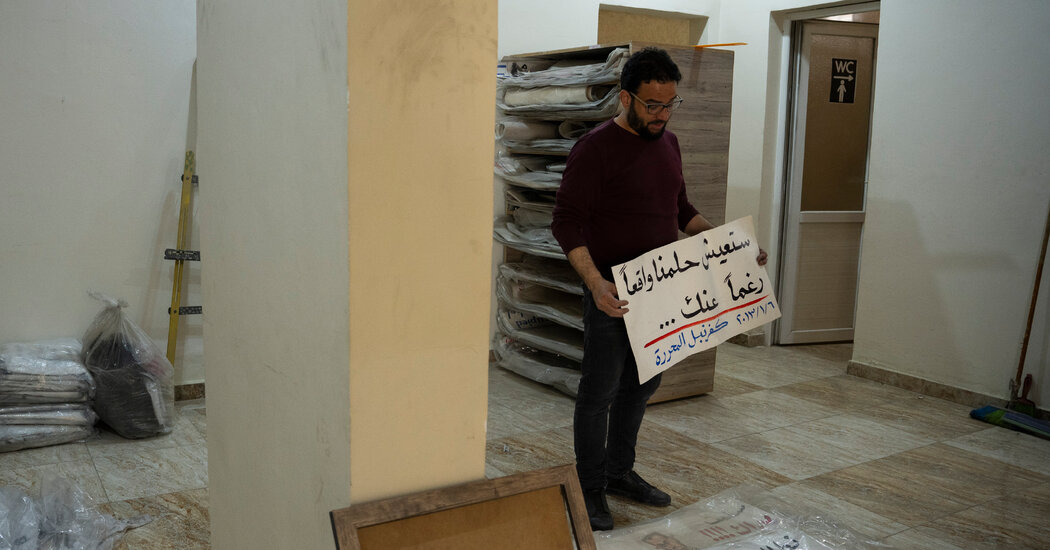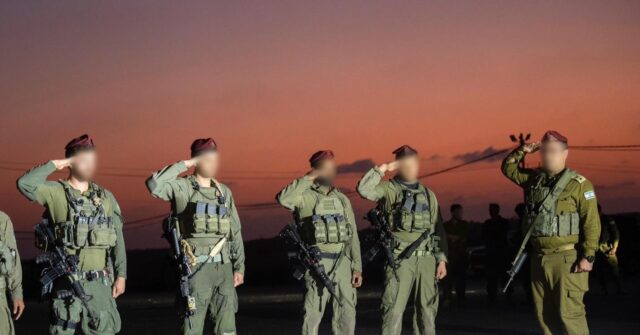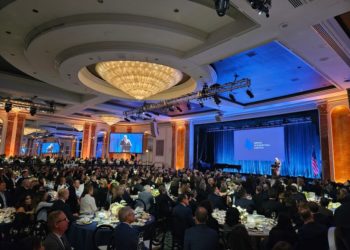Banners, posters and graffiti denouncing the dictatorship. Artillery shells turned into sculptures. Implements of torture. Even an entire prison.
As Syria emerges from a painful chapter in its recent history, some in the country are fervently trying to preserve the remnants of an anti-government uprising that morphed into a civil war and lasted almost 14 years. The hope is that these will serve not only as reminders of what opponents did to fight a brutal regime, and the price they paid, but as a cautionary tale.
Others are rushing to salvage troves of documents, hard drives and computers from the ousted government, items they hope will aid in bringing a measure of justice and accountability.
“You might say we need to forget these scenes. But I don’t want to forget,” said Mutassim Abdulsatir, a 45-year-old who was detained at Syria’s most notorious prison, Sednaya. “These must become a remembrance for days to come so they are not repeated, not in Syria, and not in any country in the world.”
On a recent day outside Sednaya prison, where untold numbers of inmates were summarily executed, Mr. Abdulsatir was collecting nooses from ropes intertwined like clumps of hair. He then dragged them inside the prison, with its sprawling wings and dank dungeons, for safekeeping, imagining them displayed in a glass case.
“I want to preserve these,” he said of the nooses. “This is priceless,” he added, before rattling off the names of detainees who probably met their end in the prison. “They were all executed here with this.”
Mr. Abdulsatir, who now works as a researcher for the Association of Detainees and Missing Persons of Sednaya, described how prisoners were received there, with beatings as they were blindfolded, bound and herded like cattle.
He said he wants to save everything that remains of Sednaya, from the names of prisoners and messages they scratched into cell walls, to the clothes and shoes still piled throughout the prison, and even the small tubs in which they were given sparse food.
The urge to enshrine objects connected to decades of oppression has not extended to the thousands of pictures, billboards and statues of the ousted dictator Bashar al-Assad and his father and predecessor. After rebels overthrew Mr. al-Assad in early December, Syrians rushed to tear down and destroy the images of him and his family.
For many Syrians, the urge to safeguard their recent history is particularly acute because of past experience.
In 1982, security forces answering to Hafez al-Assad, Mr. al-Assad’s father, massacred thousands of civilians and razed the central city of Hama to crush an anti-government uprising led by the Muslim Brotherhood, an Islamist group.
Syrians risked arrest or worse for decades if they spoke openly about the uprising and massacre, which the Assad family characterized as a battle against terrorists.
“As Syrians under the Assad dynasty, we were forbidden from remembering anything,” said Sana Yazji, 55, a graphic designer from the capital, Damascus.
She said she fled to neighboring Lebanon in 2013 with her family for fear that they were wanted by the Assad government. She founded an organization known as Creative Memory to document posters, songs and illustrations from the uprising that began in 2011, spurred by other Arab Spring revolutions across the Middle East and North Africa.
Some of the reminders of the uprising have already been erased, such as graffiti and street art that Syrians risked their lives to spray-paint, only to have it covered up by pro-regime forces.
These have particular resonance given that the 2011 uprising began with a single line of graffiti.
In early 2011, as Arab leaders were being toppled by grass-roots protests, a group of teenage boys in the southern city of Daraa spray-painted a school wall with a taunt to Bashar al-Assad, a former ophthalmologist: “It’s your turn, doctor.”
The teenagers were arrested and tortured, setting off demonstrations across Syria.
But a good deal of graffiti can still be seen across Syria, whether it is messages of farewell from people as they were being displaced or of defiance written on rubble left by government airstrikes.
Last month in Damascus, community organizers exhibited dozens of photos showing posters, graffiti and caricatures from the revolution. Titled “The Beginning,” it focused on peaceful anti-government opposition in the early years of the uprising.
“People are just remembering that liberation happened through weapons, which is important. But we have forgotten how it all began,” Safana Bakleh, one organizer, said of the peaceful activism.
Among the most treasured artifacts are the banners that for years were displayed each Friday during protests in the northwestern town of Kafranbel. The slogans drew international attention.
“It is not a civil war. It is a genocide. Leave us die, but do not lie,” read one from 2012. Some of the banners will be on display this weekend at a new exhibit in Damascus.
But the banners of Kafranbel were nearly lost in the war.
In May 2019, when government forces launched an offensive against rebels in northwestern Idlib province, where Kafranbel is located, residents of the town said they fled under intense airstrikes.
Hundreds of banners were left behind, said Abdullah al-Saloom, a member of the Kafranbel Media Center, which ran a local radio station and came up with the weekly slogans. He had been tasked with safekeeping them.
“The regime used to accuse us of fabricating the protests, that they weren’t actually happening,” he said, adding that the banners were “proof for history.”
Despite grave danger at the time, Mr. al-Saloom said and a friend he went back to Kafranbel to save them, sneaking in before dawn.
Government ground forces were still miles away, but warplanes were attacking, Mr. al-Saloom said. He and his friend drove in with their headlights off and headed to the media center.
When they got there, they gathered banners stuffed into plastic bags and boxes. Suddenly, they heard via walkie-talkie from an early warning network: There was a warplane above town.
They grabbed hundreds of banners and raced away. But the next morning, the pair returned, knowing the grave risks.
They could hear airstrikes in the distance and see clouds of smoke on the horizon, Mr. al-Saloom said. They recited the Muslim proclamation of faith before they drove in, fearing they could be killed.
They found that the media center had been hit by an airstrike, and most of the building was in ruins. But the banners — protected under rolls of turf used for a stadium — had survived.
They grabbed them and left quickly, fearing the warplane would return.
Mr. al-Saloom struggles to explain why the banners were worth risking his life.
“This is the history of the Syrian revolution,” he said.
Raja Abdulrahim reports on the Middle East and is based in Jerusalem.
The post Syrians Rush to Preserve Remembrances of a Painful Revolution appeared first on New York Times.




